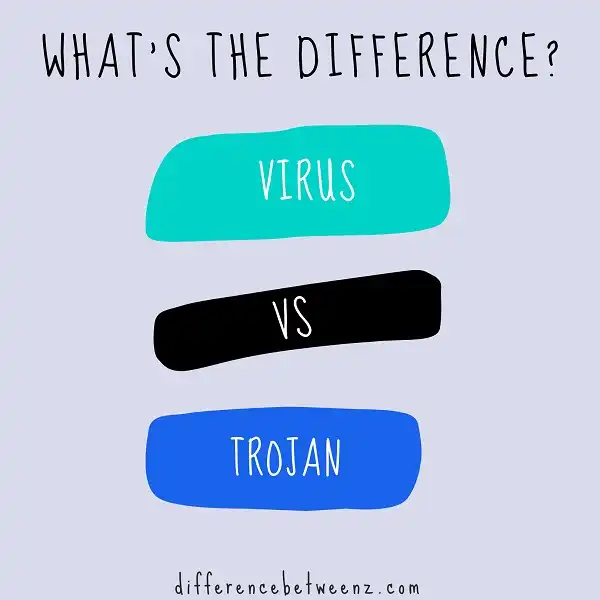When discussing malware, there are two main types of attacks that are often confused: viruses and trojans. While both can be damaging to your computer or network, they each do different things and pose unique threats. In this blog post, we will take a closer look at the difference between viruses and trojans, and how you can protect yourself from these malicious threats.
What is Virus?
A computer virus is a type of malicious code or program that, when executed, replicates by copying itself or infecting other computer programs by modifying them. Viruses spread when the software or document they are attached to is transferred from one computer to another using the network, a disk, file sharing, or infected e-mail attachments. A virus can range from causing mildly annoying effects to damaging data or software and causing system crashes. Some viruses are deliberately designed to prevent your computer from working properly or to access your personal data. The most common types of viruses include macro viruses, script viruses, boot record viruses, master boot record viruses, and companion viruses.
What is Trojan?
A trojan is malware that is designed to give an attacker unauthorized access to a computer. It is typically spread through email attachments or downloads from malicious websites. Once installed, Trojan can be used to steal sensitive information or install other forms of malware. While Trojans are often used for malicious purposes, they can also be used for legitimate purposes such as remote administration and troubleshooting. As a result, it is important to exercise caution when opening email attachments or downloading files from untrusted sources. If you believe that your computer has been infected with Trojan, it is important to run a virus scan and remove the malware as soon as possible.
Difference between Virus and Trojan
A virus is a code that has the potential to copy itself and corrupt the system. It operates by inserting or attaching itself to a legitimate program or document that supports macros in order to execute its code. A trojan is the result of poor programming practice and does not self-replicate like viruses. It seems a legitimate program but actually performs malicious actions. A virus requires user action to spread, such as opening an email attachment, downloading and running a file from the internet, or executing a malicious program. Once a user runs or executes this file, the virus code is implanted into the user’s computer and replicates itself. A trojan is spread via the same methods as viruses but requires no user interaction to activate. Once the file containing the trojan is opened or executed, the payload automatically runs without any indication to the user. The payload may damage system files, steal personal information like passwords or hijack email contacts lists for spamming purposes.
Conclusion
Although both viruses and Trojans can be damaging to your computer, there is a key difference between the two. Understanding this difference can help you protect your computer from these malicious pieces of software.


